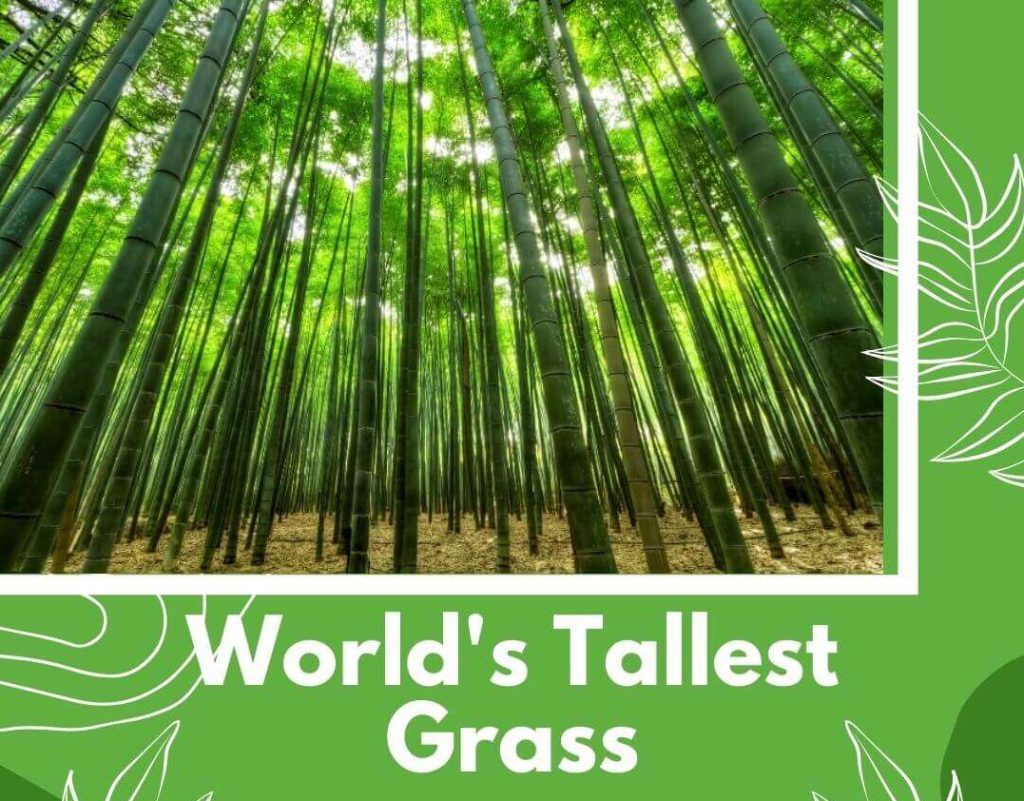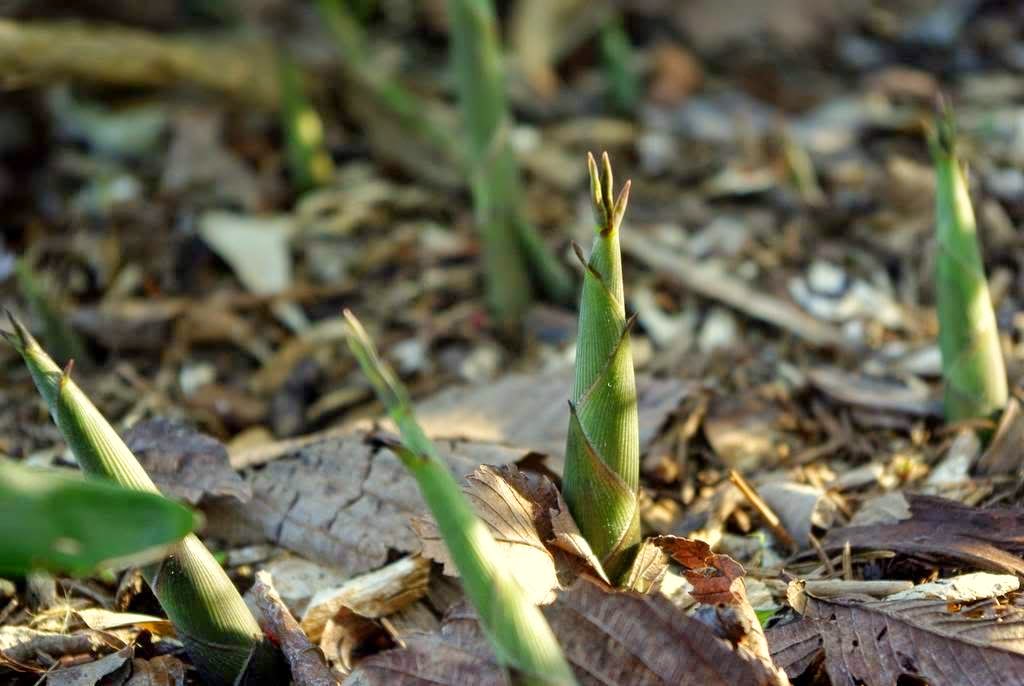Finding Out What the World’s Tallest Grass Really Is
Grasses, the ubiquitous plants that cover the Earth, hide a fascinating mystery.
One grass among them grows to incredible heights, belying the stereotype of its lowly relatives. This unusual grass not only changes the way we think about grasses in general, but it also provides us with a wealth of new ideas on how to improve our own gardens.
So, folks, brace yourselves: we’re about to embark on a journey into the mysterious world of the world’s tallest grass, a botanical wonder that will leave you speechless.
Along the way, you’ll learn if this fascinating grass is suitable for your own garden.
Table of Contents
What Type of Grass Grows to Be the World’s Tallest?
Take a look at bamboo, the tallest plant in the world:

This adaptable grass is king, with a potential height of 100 feet or more. The Dendrocalamus giganteus of south-east Asia’s tropical regions, for instance, can grow to a height of up to 164 feet.
Bamboo is an evergreen perennial that is native to Asia, Africa, and the Americas. It is a member of the Poaceae family and the subfamily Bambusoideae, and this subfamily contains 116 genera and over 1,400 species.
Not content with only being the tallest plant, bamboo also holds the record for the fastest growth rate, reaching a height of 35 inches in just one day.
The dense thickets formed by bamboo trees in the tropics and subtropics are home to a wide variety of plant and animal life. Bamboo is a highly sought after resource in many industries around the world due to its height, strength, and adaptability.
Advantages of Bamboo

Beyond its towering stature, bamboo’s useful properties are just as extensive and varied.
This extraordinary grass, for example, is a sustainable and environmentally-friendly option since it absorbs carbon dioxide at tree-like rates while emitting 35% more oxygen. Therefore, bamboo becomes an indispensable weapon in the struggle against pollution and global warming.
Bamboo’s positive effects on the environment are complemented by its value in preventing soil erosion. Its enormous root system generates a dense network that binds soil particles together, which helps to stop erosion and keeps water in places where it is scarce. Bamboo’s ability to improve soil fertility and stability is especially useful in areas where deforestation and unsustainable agriculture practices have devastated landscapes.
In addition to being abundant, renewable, and environmentally benign, bamboo also has a high growth rate. This grass matures in three to five years, while it takes hardwood trees decades. This faster rate of growth permits regular harvesting without reducing biodiversity or hastening destruction.
In addition to its resource-saving and climate-restraining effects, bamboo also provides an essential home for innumerable plant and animal species. Numerous birds, animals, insects, and even endangered species like the giant panda rely on the protection and food that can be found in the dense thickets generated by bamboo forests.
Keeping bamboo habitats in good shape helps save the planet’s irreplaceable biodiversity.
The remarkable durability of bamboo is another of the plant’s many advantages. This grass has a built-in resilience to climate change-related catastrophes like floods, landslides, and earthquakes. Bamboo construction and infrastructure in disaster-prone areas can dramatically lessen destruction and save lives.
Given its many uses and advantages, bamboo is clearly more than just the tallest grass on Earth; it is a true environmental hero.
Applications, Flexibility, and Acclaim of Bamboo
The remarkable adaptability of bamboo has led to its widespread recognition as a valuable material in many contexts.
It has quickly become the material of choice due to its unparalleled mix of durability, adaptability, and growing rate. Bamboo has been used for ages in numerous civilizations as a crucial component in the construction of scaffolding, flooring, and furniture. Its strength and light weight make it a great material for building sturdy buildings that can withstand natural disasters like earthquakes.
As the need to lessen our reliance on single-use plastics has become more pressing, bamboo has become increasingly attractive as a sustainable alternative to plastic. Brushes, forks, straws, and even biodegradable packaging have all been developed from this extraordinary grass.
Antimicrobial capabilities are an added bonus for health-conscious buyers.
Bamboo’s benefits have already been recognized in the textile industry. It is possible to make a very comfortable, breathable, and odor-proof fabric out of its fibers. Because of its eco-friendliness and high quality, bamboo is being utilized more frequently in the textile industry. This includes things like garments, blankets, and towels.
Another field in which bamboo is held in high esteem is the culinary one. The antioxidants, fiber, copper, vitamins (A, B6, E), minerals (potassium, calcium, and manganese), and other vitamins and minerals found in its tender shoots make it a healthy addition to anyone’s diet.
The delicate flavor and crisp texture of bamboo shoots make them a classic element in many Asian cuisines. These tasty morsels, whether eaten fresh or pickled, improve everything from stir-fries to salads.
It would be a mistake to downplay bamboo’s cultural value. Art, poetry, and philosophy from Asian cultures typically use it as a symbol of fortitude, elegance, and longevity.
Can I Grow Bamboo?

It’s important to think about things like climate, soil type, and containment measures if you want to grow this tall grass in your yard without encountering any unpleasant shocks.
- Incorporating bamboo into your outdoor haven? Here are some recommendations to help you get started.
Pick a good variety. There are many kinds of bamboo, and each has its own quirks and requirements for cultivation. Some, like Fargesia, do better in colder areas, while others, like Phyllostachys, do better in warmer ones. Do some homework on the available types to choose on one that thrives in your climate and garden. - Figure out how healthy your dirt is. Soil that is both loamy and well-drained is ideal for growing bamboo. However, different species may have varying soil needs. Check the soil’s pH and nutrient content to see if it’s suitable for your chosen bamboo variety, and then make any necessary adjustments.
- Choose the best planting technique. Seeds or rhizomes can be used to propagate bamboo. The advantages of growing from seeds include greater influence over the final product but at the expense of time. While division transplanting can save time, it may require more attention to detail to ensure a healthy plant takes root.
- Strategy for containment. The “running” species of bamboo (like Phyllostachys) are known for their quick germination and growth via underground rhizomes. Planting them in large containers or constructing a rhizome barrier can stop them from taking over your yard and spreading to neighboring properties. The slower-growing and less-invasive “clumping” bamboo cultivars (such as Bambusa) are a better option.
- Be sure to provide enough room. To flourish and form their characteristic canopies, bamboo plants require a lot of room. Plants should be spaced anywhere from 3 to 10 feet apart, depending on the species and the desired impact, and regular maintenance should be provided. In order to thrive, bamboo needs consistent irrigation, especially in its younger years. Keep the soil consistently moist, but don’t overwater or your plants may die of root rot. For optimal development, apply a slow-release, balanced fertilizer once a year.
- Pruning and upkeep. Remove any canes that are diseased, broken, or otherwise unusable, and thin out any areas where growth is too dense. A plant that receives regular pruning will flourish and look better for it.
The unique beauty of bamboo can be yours to admire in your own backyard with a little TLC.
Summary
As we wrap up our tour of the world’s tallest grass, we can’t help but be impressed by bamboo’s many uses, resilience, and aesthetic appeal.
This remarkable plant has established itself as not just an environmental leader, but also a versatile resource that affects many sectors, from building to food. A greener and more sustainable future is within our reach, and its distinctive aesthetic appeal can be ours just by considering the inclusion of bamboo to our own landscapes.
Let us always keep in mind, as our knowledge of this fascinating plant grows, how important it is to preserve and maintain the many natural beauties that exist in the world. Because when we take care of the world around us, we strengthen our ties to the Earth that we call home.




